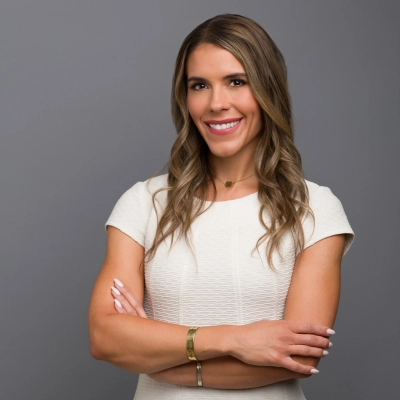Effective engagement strategies start with recognizing and leveraging employees’ natural strengths to maximize organizational performance. Drawing from expert insights across multiple disciplines, this article presents practical approaches for creating environments where talent can flourish authentically. Organizations that successfully align roles with individual capabilities consistently outperform competitors while fostering a culture of trust and meaningful contribution.
- Lead With the Platinum Rule
- Build Roles Around Natural Energy Zones
- Form Cross-Functional Teams With Shared Accountability
- Codify Success Patterns Into Custom Roles
- Role Realignment Through Documented Systems
- Align Projects With Natural Strengths Through Skill-Mapping
- Trust Employees to Use Their Full Potential
- Share Personal Work Drivers and Needs Openly
- Harness Data to Identify True Talent
- Create Safety for Authentic Strength Expression
- Focus on Employee Preferences, Not Just Strengths
- Recognize Individual Talents That Energize Work
Lead With the Platinum Rule
The turning point in my leadership came when I stopped managing people the way I wanted to be led and started leading them the way they needed to be led.
That’s the heart of the Platinum Rule: treat others how they want to be treated.
Early in my career, I lived by the Golden Rule. It worked, until it didn’t. Fairness was never the issue. Connection was. The Platinum Rule taught me that the most powerful form of leadership is personal. It’s not about equal treatment; it’s about aligned understanding.
As a superintendent overseeing hundreds of employees, I began weaving the Platinum Rule into how we operated, beginning with strengths-based assessments and extending through onboarding, one-on-ones, and how we built task forces and leadership teams. When people were placed and developed according to their natural strengths, performance and engagement took off.
“Employees who use their strengths every day are six times more likely to be engaged at work.” — Gallup Workplace Study
Onboarding with Purpose: Every new hire completed a strengths inventory before day one. Instead of starting with policies, we started with purpose, connecting personal talents to organizational goals. It built immediate trust and belonging.
Platinum 1:1s: Leaders shifted from checklists to coaching. We asked, “Where are you at your best?” and “How can I help you use that strength more often?” Those conversations built trust, ownership, and a deeper sense of purpose.
Collaboration by Design: When forming task forces or project teams, we matched people with complementary strengths, visionaries with implementers, connectors with analyzers. That mix consistently drove innovation, agility, and morale.
The impact was measurable: higher job satisfaction, stronger retention, and breakthrough results on projects that once stalled. But beyond the data, people felt seen, valued, and understood.
Today, I help other leaders integrate the Platinum Rule into their own organizations. Through strengths-based onboarding, growth-focused coaching, and intentional team design, they’re building cultures where people feel seen, valued, and motivated to perform at their best.
The Platinum Rule isn’t just about kindness; it’s about alignment. When leaders understand how each person is wired to thrive, they multiply potential.

Build Roles Around Natural Energy Zones
One approach that’s worked consistently well for me is building teams around people’s natural energy zones rather than just their job titles. Early in my career, I made the mistake of assigning tasks purely by function — but I’ve learned that engagement and productivity peak when people spend most of their time doing what they’re genuinely good at and enjoy.
We regularly talk with each employee about the situations in which they feel “in the flow” and try to build their role and development around that. One of the brightest examples is my ex-assistant. I noticed that she has a natural talent for sales: she communicates easily, is sincere, and pleasant to interact with — exactly the kind of person clients trust. Just four months after starting as an assistant, she became the business development manager of our company.
The key is to talk with people and recognize their talents in time. It’s the simplest and most effective way to unlock the team’s potential.

Form Cross-Functional Teams With Shared Accountability
We start from the belief that people perform best when they work in their zone of genius, not just in their job title. We actively map each team member’s strengths and motivators through peer feedback and regular one-on-ones, then align projects around what energizes them most.
One successful approach has been our “ownership pods,” where small cross-functional teams lead a specific product metric — like activation rate or churn reduction — end to end. This structure lets engineers, designers, and product managers use their unique strengths while sharing accountability for the outcome. It’s boosted engagement and sped up delivery because everyone feels directly connected to the impact of their work.

Codify Success Patterns Into Custom Roles
We enhance engagement by aligning individuals with the work they excel at doing naturally. Our model uses employee outputs as success measures (e.g., code quality, deliverable quality, campaign success, and client satisfaction) to identify patterns of repeat success over time. Then we codify these strengths into roles and KPIs, such that targets reflect the unique value an individual can add. Employees are most engaged when they are able to let their skills shine and add value.
For example, a developer who is strong at performance tuning also owns improvements to Core Web Vitals, while a strategist who excels at message testing owns lifting conversions from different headline variants. We conduct quarterly reflections to revisit their strengths, profiles and goals as needed. The benefits of these systems include improved motivation, productivity, and retention.

Role Realignment Through Documented Systems
In my work as a Small Business Optimizer, one of the first things I do when I work with a small business is slow things down just enough to really see people.
Not just their job titles or task lists, but how they naturally think, communicate, and problem-solve.
Every business has hidden strengths tucked inside its team, but those strengths often get buried under chaos or unclear systems.
A successful approach I use is what I call “role realignment through systems.” Once we clarify and document the workflows (so the work itself is visible and repeatable), we can start noticing who lights up where (who’s the natural troubleshooter, who brings calm to client chaos, who has a knack for follow-through, etc.). Then we adjust roles or responsibilities to better match those innate strengths.
It’s amazing how quickly engagement and productivity rise when people feel seen, supported, and set up to succeed! Systems make it possible, but trust and curiosity make it sustainable.

Align Projects With Natural Strengths Through Skill-Mapping
A proven approach is skill-mapping to align employees’ personal strengths with the needs of a project rather than strict job responsibilities. Through ongoing examination of technical and people skills, we identify where employees can add the most value and create assignments that leverage their natural strengths. Not only does this increase engagement, but it also increases productivity because workers want to apply their personal strengths to worthwhile tasks.

Trust Employees to Use Their Full Potential
We view engagement as the natural consequence of allowing people to use their full potential. Strength-based management ensures creativity thrives without excessive intervention or narrow expectations. Our goal is to convert talent diversity into organizational innovation through collaboration networks. Individuals are encouraged to lead projects aligned with both skill and curiosity. Empowerment grounded in trust creates productivity that feels effortless yet impactful.
One success occurred when we allowed content strategists to co-lead campaigns with SEO technicians directly. The synergy generated fresh storytelling formats supported by strong analytical insight. Campaign results surpassed projections, showing marked increases in engagement and conversion rates. Employees felt invigorated through autonomy coupled with shared ownership structures. When individuals see their uniqueness valued, motivation becomes an unbreakable cultural cornerstone.

Share Personal Work Drivers and Needs Openly
I lean into strengths assessments to understand how individuals and teams naturally think, feel, and behave. One approach that works well is to have each employee on a team share in one to two sentences what drives them, what drains them, what they need from others to be at their best, and how others can count on them. When employees can openly communicate how their strengths are best leveraged, and fellow employees understand and appreciate those strengths, engagement and performance amplify.

Harness Data to Identify True Talent
As a CEO, you accept that you don’t have regular, direct contact with every part of your business. You must rely on your leaders to assess your people, spot the top performers, and nurture those who could be great.
Herein lies the fundamental challenge. Every leader has their own style, their own opinions, and their own inherent biases. This means you often struggle to get a truthful, objective view of your organization’s talent. This inevitably results in uneven treatment and creates inefficiencies in engagement and sentiment that you are unable to see clearly, let alone address effectively.
Furthermore, the people reports we traditionally rely on are often out of date by the time they are delivered. This means we are always looking backwards, managing based on historical views rather than present-day reality.
The single most successful approach is to start harnessing the data your business creates every day to break through these problems. You can use this data to spot your best and most consistent leaders in the same way you can spot your high performers and those with high potential. This moves you from the realm of subjective opinion into objective fact.
A word of caution, your legacy tech with some AI lipstick on it may not help you achieve this. By embracing the right technology, you can increase productivity, identify problems before they become disasters, reduce bias, and gain a real-time view into how your business and its people are actually performing.

Create Safety for Authentic Strength Expression
The most effective way to leverage employee strengths is to create an environment where people feel safe enough to show them. I start by helping teams understand their own nervous system patterns — how stress or pressure affects their communication, creativity, and confidence. When leaders recognize that performance isn’t just about skill but about state, they can assign roles and projects that align with each person’s natural strengths instead of pushing against them.
One of my most successful approaches has been integrating short regulation and reflection practices into team meetings. When people feel grounded and seen, they think more clearly, collaborate more effectively, and take greater ownership of their work. Engagement grows naturally when people can bring their whole selves to what they do.

Focus on Employee Preferences, Not Just Strengths
When we have one-on-one meetings with our employees, there are lots of different things we talk about. One is asking them what projects or duties they enjoy doing the most and would prefer focusing on. It’s one thing to give responsibilities to employees based on what you perceive their strengths to be and it’s another to consider what they enjoy/want to do. Focusing on perceived strengths can help with results, but focusing on their preferences can also really help with engagement and productivity. Ideally, their strengths and preferences overlap.

Recognize Individual Talents That Energize Work
People perform at their best when they feel empowered to use their inherent strengths. We prioritize understanding what truly motivates every person — what kind of work leaves them feeling energized rather than depleted. My test for this is always how team members solve problems in the crush of campaign season. Put simply, when individuals feel that their individual talents are seen and valued, engagement goes up while burnout goes down. It’s a principle that transcends our well-being as a brand.
In our launch of the new bedding line, one of the team members had a passion and curiosity for understanding customer behavior and using data to drive insights. I shifted him from general campaign support to leading performance testing and analytics. Using strength recognition isn’t just management — it’s respect. It has transformed from a KPI into the purest form of company culture.


